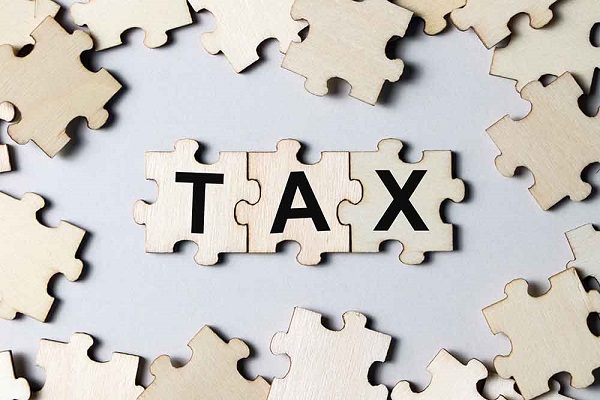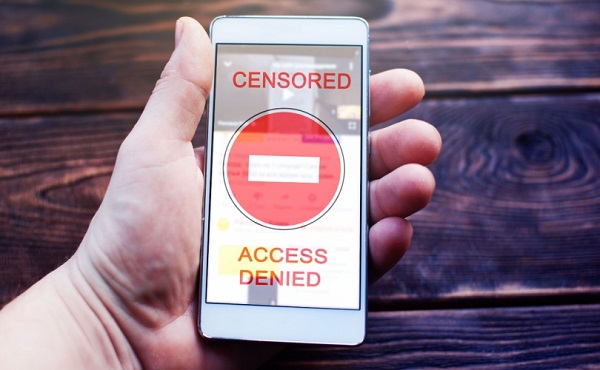Business
Cut Corporate Income Taxes massively to increase growth, prosperity

From the Frontier Centre for Public Policy
By Ian Madsen
The federal Liberal government’s current budget proposal to increase the inclusion rate for capital gains tax was met with justifiable criticism and opposition – primarily from business groups. There is another corporate income tax increase looming. A 2018 corporate tax reduction, intended to make Canada less uncompetitive versus the 2017-enacted tax reform and cut in the United States (which came into effect fully in 2018), is set to expire starting this year.
According to a study by University of Calgary’s School of Public Policy’s Trevor Tombe, Canada’s corporate income tax rate on new investments will jump from 13.7% to 17% by 2027. Even worse, for Canada’s high-value-added manufacturing sector, taxation will triple. For a nation that is having a hard time, encouraging both domestic or foreign investors to invest in new plant, equipment and related goods and services, to reverse meagre productivity growth – as noted by the Bank of Canada – this development is beyond questionable.
This rise will hinder future improvement in incomes and the standard of living – making it a serious issue. It should be obvious to policymakers that increasing income tax on businesses and investment should be avoided. The legislation to make the 2018 provisions permanent is, alarmingly, not urgent to politicians seeking to appease certain types of class warfare-cheering voters.
There is at least one policy that could make Canada more attractive to business, investors, and hard-pressed ordinary citizens. It would be, dramatically and substantially, slash corporate income taxes – plus make paying taxes easier, as Magna Corporation founder Frank Stronach has suggested. It may surprise some Canadians, but, Ottawa’s take from corporate income taxes is a relatively small, but fast rising proportion of federal overall revenue: 21%, in fiscal 2022-23, according to Ottawa, up from 13% in fiscal 2000-21 notes the OECD.
This may seem ‘just fine’: let companies pay the taxes and reduce the tax burden on ordinary people. However, what actually happens is that every corporate expense, including taxes, reduces cash flow. The money remaining could either be reinvested or paid out as dividends to owners. A reminder: owners are founding families; pension fund beneficiaries (employees, citizens); and ordinary individuals.
As to reinvesting available funds, the less there are, the less capital investment can occur. Investment is required to replace existing equipment, or add new equipment, devices, software and vehicles for businesses. This not only keeps companies competitive, but also makes employees more productive. This, in turn, makes the whole economy more profitable, thereby increasing taxes paid to governments.
As for the dubious reason for the tax hike, gaining more revenue – recent experience in the United States is instructive. The 2017 Tax Cut and Jobs Act reduced corporate income tax from 39% of pre-tax income to 21%. The result: U.S. federal corporate income tax revenue rose 25% from 2017 to fiscal 2021. Capital investment rose dramatically too, by 20%, a key goal of many Canadian policymakers.
Taxes should be cut, enabling productivity improvement and bringing a future prosperity that we all yearn for. It would also keep us internationally competitive. We are currently mediocre, being around a 25% rate (OECD).
Canada has a hard time attracting investors. Now, our trading partners are leaving us in the dust.
Ian Madsen is the Senior Policy Analyst at the Frontier Centre for Public Policy
Business
WEF-linked Linda Yaccarino to step down as CEO of X

From LifeSiteNews
Yaccarino had raised concerns among conservatives and free speech advocates for previously serving as chairwoman of a World Economic Forum taskforce and promoting DEI and the COVID shots.
X CEO, Linda Yaccarino, announced today that she is departing from her position at the social media giant.
“After two incredible years, I’ve decided to step down as CEO of 𝕏,” wrote Yaccarino on X.
“When Elon Musk and I first spoke of his vision for X, I knew it would be the opportunity of a lifetime to carry out the extraordinary mission of this company,” she continued. “I’m immensely grateful to him for entrusting me with the responsibility of protecting free speech, turning the company around, and transforming X into the Everything App.”
“I’m incredibly proud of the X team – the historic business turn around we have accomplished together has been nothing short of remarkable,” she said.
After two incredible years, I’ve decided to step down as CEO of 𝕏.
When @elonmusk and I first spoke of his vision for X, I knew it would be the opportunity of a lifetime to carry out the extraordinary mission of this company. I’m immensely grateful to him for entrusting me…
— Linda Yaccarino (@lindayaX) July 9, 2025
Musk hired Yaccarino in May 2023, seven months after his $44 billion purchase of the tech company, then known as “Twitter.”
At the time, Musk’s choice to take the helm at his newly acquired company raised eyebrows among conservative observers who had earlier rejoiced at the tech mogul’s intent to rescue free speech on the internet but now were troubled about the credentials of the digital platform’s new head.
Their concerns were not without good reason.
Yaccarino had previously served as chairwoman of the World Economic Forum’s “future of work” taskforce and sat on the globalist group’s “steering committee” for “media, entertainment, and culture industry.”
She had also boasted about her role as an early cheerleader for the untested COVID-19 jab.
As 2021–2022 Ad Council Chair, she “partnered with the business community, the White House, and government agencies to create a COVID-19 vaccination campaign, featuring Pope Francis and reaching over 200 million Americans,” according to her biography page at NBCUniversal, where she had been president before being lured to Twitter by Musk.
While at NBCUniversal, she also pushed discriminatory, equity-based hiring practices, based on “diversity” characteristics such as gender and race.
“At NBCU, she uses the power of media to advance equity and helps to launch DEI [Diversity, Equity, Inclusion]-focused initiatives,” recounted her online biography.
For the most part, over the last two years, Yaccarino’s performance at X allayed suspicions free speech activists at first harbored.
“Honestly, I was worried when she was hired but she didn’t burn down the house,” quipped popular conservative X account, @amuse.
Mike Benz, who serves as executive director of the Foundation For Freedom Online, a free speech watchdog organization dedicated to restoring the promise of a free and open internet, was far more effusive in his praise of Yaccarino.
“Linda stood up and fought for free speech during arguably its most acute crisis moment in world history when we were almost on the brink of losing it,” said Benz in an X post. “She stepped up for all of us in the face of what seemed like insurmountable pressure from governments, advertisers, boycotters, banking institutions, and astroturfed lynch mobs.”
Automotive
Federal government should swiftly axe foolish EV mandate

From the Fraser Institute
Two recent events exemplify the fundamental irrationality that is Canada’s electric vehicle (EV) policy.
First, the Carney government re-committed to Justin Trudeau’s EV transition mandate that by 2035 all (that’s 100 per cent) of new car sales in Canada consist of “zero emission vehicles” including battery EVs, plug-in hybrid EVs and fuel-cell powered vehicles (which are virtually non-existent in today’s market). This policy has been a foolish idea since inception. The mass of car-buyers in Canada showed little desire to buy them in 2022, when the government announced the plan, and they still don’t want them.
Second, President Trump’s “Big Beautiful” budget bill has slashed taxpayer subsidies for buying new and used EVs, ended federal support for EV charging stations, and limited the ability of states to use fuel standards to force EVs onto the sales lot. Of course, Canada should not craft policy to simply match U.S. policy, but in light of policy changes south of the border Canadian policymakers would be wise to give their own EV policies a rethink.
And in this case, a rethink—that is, scrapping Ottawa’s mandate—would only benefit most Canadians. Indeed, most Canadians disapprove of the mandate; most do not want to buy EVs; most can’t afford to buy EVs (which are more expensive than traditional internal combustion vehicles and more expensive to insure and repair); and if they do manage to swing the cost of an EV, most will likely find it difficult to find public charging stations.
Also, consider this. Globally, the mining sector likely lacks the ability to keep up with the supply of metals needed to produce EVs and satisfy government mandates like we have in Canada, potentially further driving up production costs and ultimately sticker prices.
Finally, if you’re worried about losing the climate and environmental benefits of an EV transition, you should, well, not worry that much. The benefits of vehicle electrification for climate/environmental risk reduction have been oversold. In some circumstances EVs can help reduce GHG emissions—in others, they can make them worse. It depends on the fuel used to generate electricity used to charge them. And EVs have environmental negatives of their own—their fancy tires cause a lot of fine particulate pollution, one of the more harmful types of air pollution that can affect our health. And when they burst into flames (which they do with disturbing regularity) they spew toxic metals and plastics into the air with abandon.
So, to sum up in point form. Prime Minister Carney’s government has re-upped its commitment to the Trudeau-era 2035 EV mandate even while Canadians have shown for years that most don’t want to buy them. EVs don’t provide meaningful environmental benefits. They represent the worst of public policy (picking winning or losing technologies in mass markets). They are unjust (tax-robbing people who can’t afford them to subsidize those who can). And taxpayer-funded “investments” in EVs and EV-battery technology will likely be wasted in light of the diminishing U.S. market for Canadian EV tech.
If ever there was a policy so justifiably axed on its failed merits, it’s Ottawa’s EV mandate. Hopefully, the pragmatists we’ve heard much about since Carney’s election victory will acknowledge EV reality.
-

 MAiD2 days ago
MAiD2 days agoCanada’s euthanasia regime is already killing the disabled. It’s about to get worse
-

 Daily Caller16 hours ago
Daily Caller16 hours agoUSAID Quietly Sent Thousands Of Viruses To Chinese Military-Linked Biolab
-

 Alberta13 hours ago
Alberta13 hours ago‘Far too serious for such uninformed, careless journalism’: Complaint filed against Globe and Mail article challenging Alberta’s gender surgery law
-

 Censorship Industrial Complex24 hours ago
Censorship Industrial Complex24 hours agoCanadian pro-freedom group sounds alarm over Liberal plans to revive internet censorship bill
-

 Fraser Institute1 day ago
Fraser Institute1 day agoBefore Trudeau average annual immigration was 617,800. Under Trudeau number skyrocketted to 1.4 million from 2016 to 2024
-

 International2 days ago
International2 days agoChicago suburb purchases childhood home of Pope Leo XIV
-

 Daily Caller2 days ago
Daily Caller2 days ago‘I Know How These People Operate’: Fmr CIA Officer Calls BS On FBI’s New Epstein Intel
-

 Economy1 day ago
Economy1 day agoThe stars are aligning for a new pipeline to the West Coast


